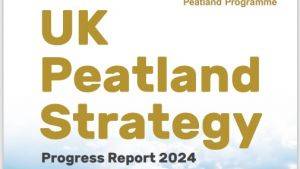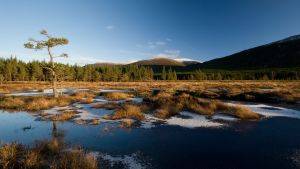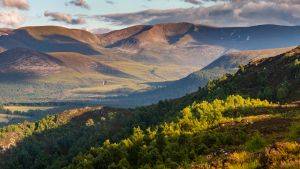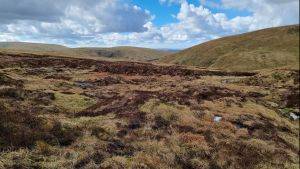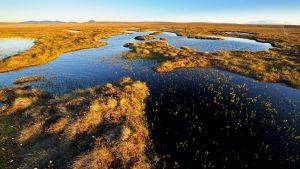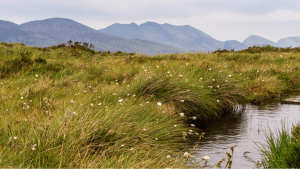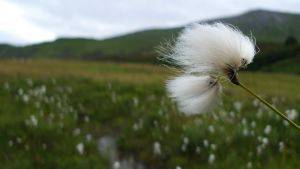Restoring the mires of the Australian Alps following the 2003 wildfires
Introduction
The number and area of mires (fens and bog) of the Australian Alps has declined dramatically over the past 150 years due to grazing by domestic stock, recreation activities, infrastructure development, increasing feral animal damage, and exotic weed invasion. In addition to this degradation, the 2003 wildfires burnt over almost all the alpine, subalpine and montane fens and bog, with a further loss of about 15% of the functional mires existing at the time.
Description
Following the 2003 wildfires approximately 70 large peat bog areas required restoration works to ensure that they recovered to a fully functional condition. The impacts of the fires varied and damage ranged from minor burning of some Sphagnum (moss) hummocks (mainly Sphagnum cristatum), to complete destruction of the bog and fen vegetative cover and partial burning of the underlying peatbeds. The latter resulted in the loss of the functional hydrological role of the peats and as a consequence, the loss of the ecosystem services the bogs and fens provide to catchment water storage, flow regulation and runoff filtering.
Project Aims
A program of restoration and revegetation of the mires was started in March 2003 and continues to be implemented by field staff of the individual national parks within the Alps National Parks Co-operative Management Agreement. The aim is restore and enhance the capacity of the damaged areas to recover their functional hydrological role, and regenerate a stable natural mire vegetation complex. Several mire recovery monitoring and research programs were also initiated immediately post-fire to both guide the restoration work and to quantify the benefits of the various restoration techniques and programs (Hope, et al. 2006). Photo monitoring points were established at all bog and fen restoration sites and several demonstration sites were also established to visually monitor the benefits of mire restoration and to act as ecological restoration education and interpretation sites.
Restoration Delivered
Restoration works were applied to approximately 130 individual bog and fen sites burnt by the fires – about one tenth of the total number of bogs and fens burnt over by the fires. Approximately 300 ha of bog and fen ecosystem has been restored to functional and stable mires, with large areas of adjacent organic soils and associated shrub and grassland ecosystems benefiting from the improved soil moisture regime accruing from the mire restoration works. All bogs and fens, to which restoration works have been applied have recovered from a desiccated state to a saturated state, although the full recovery of this condition has taken between 15 months and six years. Based on past experience, full recovery of the functional role of the ecosystem and a complete bog and fen vegetation complex will still take many years to achieve.
Site Activity
There are two main tenets for this ecological restoration work: one is that peat bog should recover their capacity to take up surface and subsurface flows so they regain their saturated state, and the other is the need for the recovery and restoration of a natural shade cover to provide for widespread recovery of mire plants particularly that of Sphagnum spp. regeneration. The techniques used for the restoration of bog and fen ecosystems involved shading and protection of the remnant bog and fen plant populations, particularly Sphagnum species from high ultra-violet light levels and desiccation by covering the Sphagnum hummocks with shade cloth; the construction of straw-bale ‘dams’ in flowlines to create/restore surface pools; the construction of subsurface organic matter dams to slow the flow of water from the peats; and the placement of coir and straw-filled jute mesh ‘logs’ as surface water-spreaders and sediment traps.
Project Name: Restoring the mires of the Australian Alps following the 2003 wildfires
Organisation / Lead partner: Australian Alps national parks
Predominately: Upland

